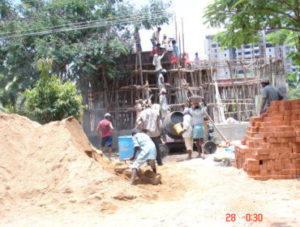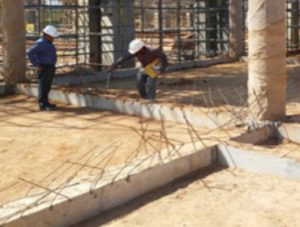Safe bearing capacity of soil/construction
- By Myhome
- July 19, 2019
- 1:05 pm
- No Comments
Allowable safe bearing capacity of soil,Building structure, Chemical treatment of soil, Concrete blocks, Determination of Ultimate bearing capacity of soil in the field, Earth compaction,Gravity pipe drainage system
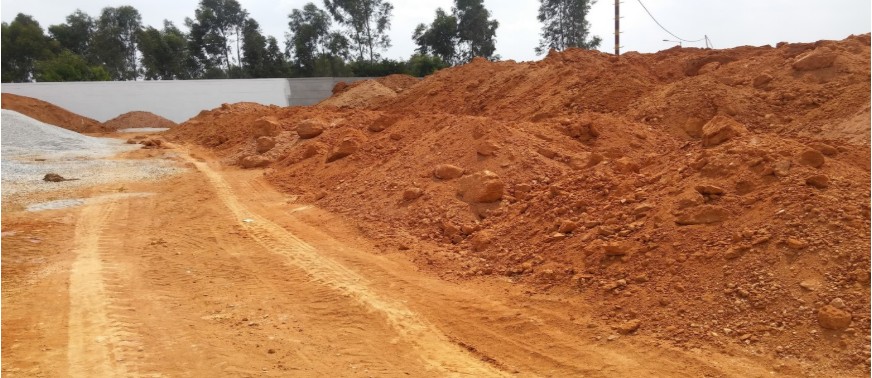
Foundation :
The earth soil supporting a building structure should be strong enough to carry the live load. After thorough exploration of the type of soil, ground water table, depth of rock obtained at foundation etc., the further stage is to go for an appropriate foundation required for the building structure.
- Safe bearing capacity of soil :
- The depth of foundation is to determine its bottom size, so that it can easily transfer the load from building to bottom most soil without any substantial settlement or failure.
- To find out this, a thorough understanding of the safe allowable pressure over the soil is absolutely required.
- Hence it is necessary to conduct first test, before construction is safe bearing capacity of the soil.
The maximum load per unit area which the soil can withstand without any displacement or settlement or shear failure is called the “Safe bearing capacity of the soil.”
Maximum load on footing
Therefore Safe bearing capacity of soil = ———————————————–
Area of the footing
- Ultimate bearing capacity or Maximum safe bearing capacity of soil:
The maximum pressure intensity at the base of the foundation that a soil can withstand without any possibility of shear failure only, irrespective of any kind of settlement that would cause.
Maximum safe Bearing Capacity of Different soils :
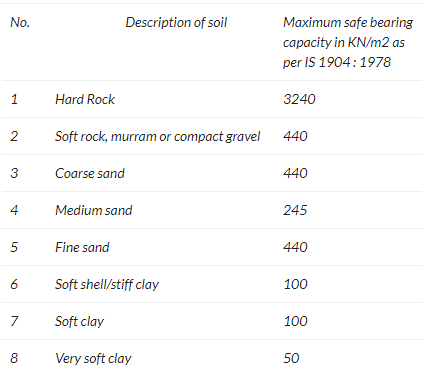
- Determination of safe bearing capacity of soil
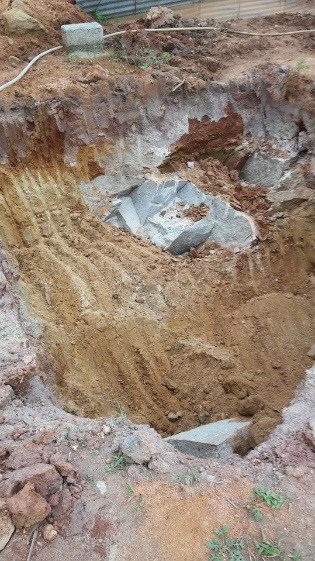
Allowable safe bearing capacity or Permissible
safe bearing capacity of soil:
- It is the maximum pressure which can deployed on a soil while taking shear failure into account, settlement and the capacity of structure to withstand settlement.
- Hence its value is subjected to the nature of ground and type of building structure.
- Determination of ultimate bearing capacity of soil in the field:
There are many methods of determination of bearing capacity of soil but the easiest and commonly used field test is the plate load test, explained here.
- Plate Load test :
- A square pit of sides equal to five times the width of test plate is excavated up to the requisite depth.
- Test plates should be steel plates of size 60 cm square for clayey soil, and 30 cm square for sandy soil to be used.
- At the center of the pit, a square hole of size equal to the test plate is to be excavate.
Test Plate : The bottom of the test plate should be along the proposed foundation level. {b1/d1=b2/d2}
- The plate is accurately seated over the center of pit and it should be in contact with the soil over the Entire area
- A loading post and hydraulic jack is provided above the test plate.
- Hydraulic jack support a gravity loading platform and operated by using remote control pumping unit.
Loading : The loading is done with sand bags, concrete blocks or stones
- Load is increased in fixed increments of 250 kg or 1/5th of ultimate bearing capacity whichever is less
- Each loading increment is kept in a position awaiting no further measurable settlement. Settlement of the plate is measured by two sensitive dial gauge of sensitivity 0.02 mm per hour
- Plot a graph Verses settlement and load.
- From the graph, measure maximum load up to which settlement is proportional
- Ultimate Bearing capacity of soil = Maximum load/area of test plate
- Methods for improving bearing capacity of soil :
Most of the times in the areas where soil having poor bearing capacity at shallow depth or nominal depth, then the size of the footings works out to be expensive. Under such situations, it becomes essential to improve the safe bearing capacity of the soil by adopting the following measures
- Increase the depth of foundation: best suited where the foundation is entirely depending on the kind of structure and its load transferred to the soil.
- By draining the soil: Water content in soil is reduces its bearing capacity, therefore by draining out excess water from soil by gravity pipe drainage system, the uplift pressure is decrease and pipes are sealed at top, by this, the soil can be improved with required bearing capacity
- compacting the soil: by using hand rammers or plate vibrators, compaction can be done, the voids of the soil drastically reduces the open spaces between the individual particles and improves its bearing capacity.
- By grouting: by drilling suitable holes in the ground, and Cement slurry is injected under pressure into the subsoil to seal off voids in between subsoil and foundation.
- Sheet piles: Sheet piles are driven around the structure to form an enclosure, which will prevent the movement of soil.
- Chemical treatment: Chemical solution are injected under pressure into the soil, which forms a gel and keep soil particles together to form a compact mass. But this method is expensive and suitable for important structures.
Share on facebook
Facebook
Share on whatsapp
WhatsApp
Share on twitter
Twitter
Share on linkedin
LinkedIn
Share on pinterest
Pinterest

